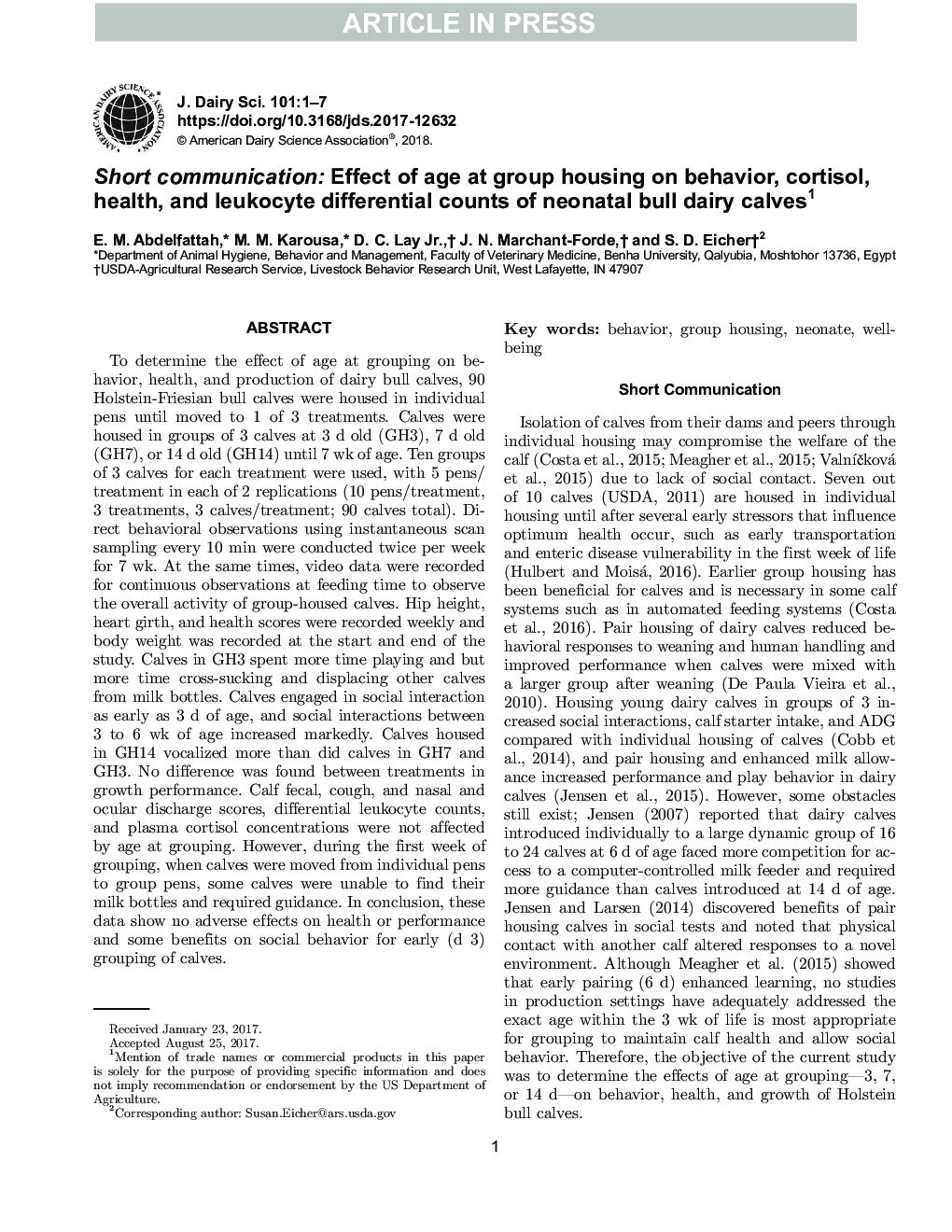| کد مقاله | کد نشریه | سال انتشار | مقاله انگلیسی | نسخه تمام متن |
|---|---|---|---|---|
| 8501743 | 1553844 | 2018 | 7 صفحه PDF | دانلود رایگان |
عنوان انگلیسی مقاله ISI
Short communication: Effect of age at group housing on behavior, cortisol, health, and leukocyte differential counts of neonatal bull dairy calves
ترجمه فارسی عنوان
ارتباط کوتاه: اثر سن در گروه مسکن بر رفتار، کورتیزول، سلامتی و تعداد دیفرانسیل لکوسیتی گوساله های شیرخوار نوزاد
دانلود مقاله + سفارش ترجمه
دانلود مقاله ISI انگلیسی
رایگان برای ایرانیان
کلمات کلیدی
رفتار - اخلاق، مسکن گروهی، نوزاد تندرستی،
موضوعات مرتبط
علوم زیستی و بیوفناوری
علوم کشاورزی و بیولوژیک
علوم دامی و جانورشناسی
چکیده انگلیسی
To determine the effect of age at grouping on behavior, health, and production of dairy bull calves, 90 Holstein-Friesian bull calves were housed in individual pens until moved to 1 of 3 treatments. Calves were housed in groups of 3 calves at 3 d old (GH3), 7 d old (GH7), or 14 d old (GH14) until 7 wk of age. Ten groups of 3 calves for each treatment were used, with 5 pens/treatment in each of 2 replications (10 pens/treatment, 3 treatments, 3 calves/treatment; 90 calves total). Direct behavioral observations using instantaneous scan sampling every 10 min were conducted twice per week for 7 wk. At the same times, video data were recorded for continuous observations at feeding time to observe the overall activity of group-housed calves. Hip height, heart girth, and health scores were recorded weekly and body weight was recorded at the start and end of the study. Calves in GH3 spent more time playing and but more time cross-sucking and displacing other calves from milk bottles. Calves engaged in social interaction as early as 3 d of age, and social interactions between 3 to 6 wk of age increased markedly. Calves housed in GH14 vocalized more than did calves in GH7 and GH3. No difference was found between treatments in growth performance. Calf fecal, cough, and nasal and ocular discharge scores, differential leukocyte counts, and plasma cortisol concentrations were not affected by age at grouping. However, during the first week of grouping, when calves were moved from individual pens to group pens, some calves were unable to find their milk bottles and required guidance. In conclusion, these data show no adverse effects on health or performance and some benefits on social behavior for early (d 3) grouping of calves.
ناشر
Database: Elsevier - ScienceDirect (ساینس دایرکت)
Journal: Journal of Dairy Science - Volume 101, Issue 1, January 2018, Pages 596-602
Journal: Journal of Dairy Science - Volume 101, Issue 1, January 2018, Pages 596-602
نویسندگان
E.M. Abdelfattah, M.M. Karousa, D.C. Jr., J.N. Marchant-Forde, S.D. Eicher,
